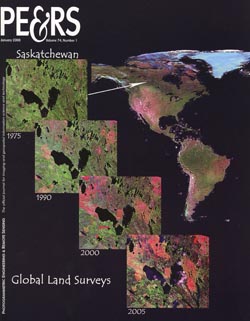
- NASA and the U.S. Geological Survey (USGS) continue to enable better land-cover change research with the creation of the Global Land Survey 2005 (GLS2005). The GLS2005 data set is a collection of 9500 orthorectified leaf-on medium-resolution satellite images collected between 2004 and 2007 and covering the Earth’s land masses. GLS2005 uses mainly Landsat 5 and gap-filled Landsat 7 data with EO-1 ALI and Terra ASTER data filling in any data holes. GLS2005 is the latest global Landsat data set. Previous datasets include GLS1975, GLS1990, and GLS2000 (previously known as GeoCover™ data sets). The image scenes that make up GLS2005 will be made available as they are produced from the USGS GloVis and Earth Explorer websites. GLS2005 analysis will include the generation of both land-cover and land-cover change data products. These products will feed into a multitude of environmental monitoring programs such as the North American Carbon Project, the Forest Resources Assessment program, the Monsoon Asia Integrated Regional Study, the Northern Eurasia Earth Science Partnership Initiative and more.
For more information, visit:
+ The USGS Landsat website
+ Gutman, G., R. Byrnes, J. Masek, S. Covington, S, C. Justice, S. Franks, and R. Headley (2008). Towards monitoring land cover and land-use changes at a global scale: The Global Land Survey 2005. Photogrammetric Engineering & Remote Sensing, January 2008, vol. 74, no. 1, pp.:6–10.






